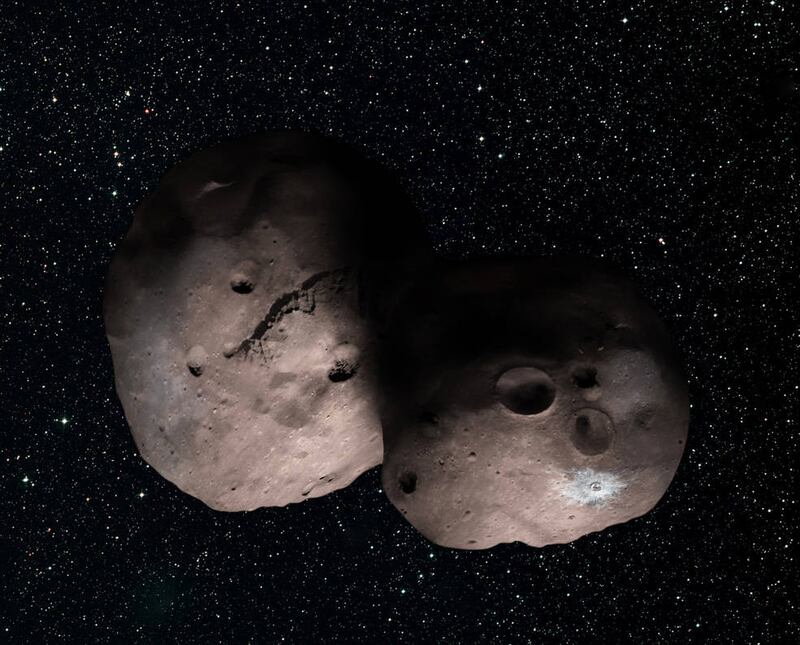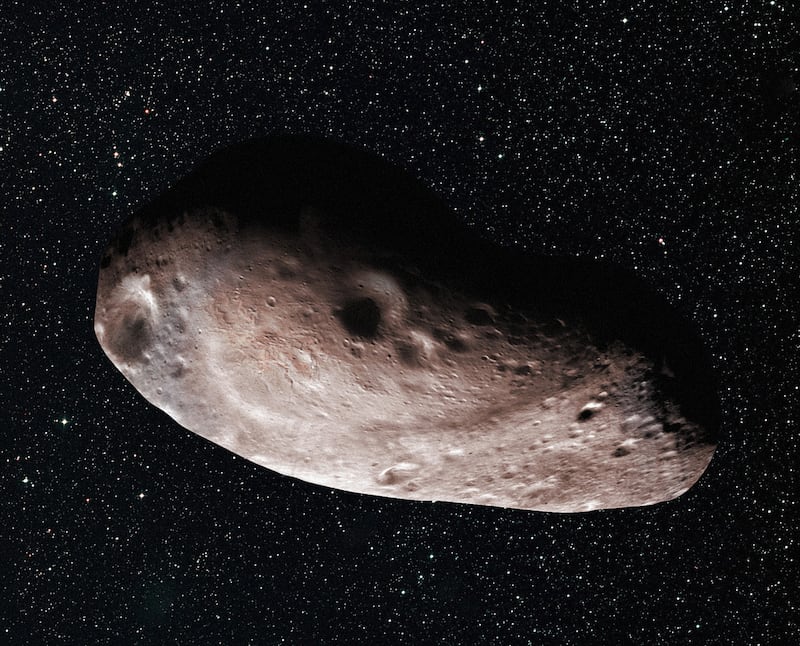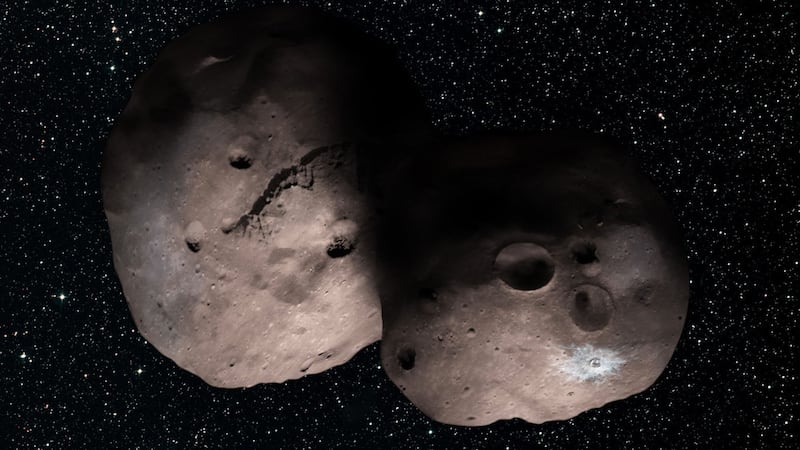This is a first look at the next target of Nasa’s New Horizons spacecraft: an oddly-shaped object some one billion miles beyond Pluto.
Officially known as 2014 MU69, it lies in the Kuiper Belt, a region full of icy bodies and comets, and will be the focus of a flypast on January 1 2019.
The new artist’s concepts were created after MU69 passed in front of a star on July 17 2017, returning more data about its shape.
Telescope assembly for the July 17 observations of 2014 MU69, recon on @NASANewHorizons' 2019 flyby target! Credit:T. Blank #mu69occ pic.twitter.com/IKjKaxsPVZ
— NASA New Horizons (@NASANewHorizons) July 16, 2017
Telescopes in a remote part of Argentina were primed to catch its fleeting shadow – an event known as occultation. The data allowed Nasa to calculate its size, shape and orbit to model the new images. More data came from the Hubble Space Telescope and the European Space Agency’s Gala satellite.

“Based on these new occultation observations, team members say MU69 may not be not a lone spherical object, but suspect it could be an ‘extreme prolate spheroid’ – think of a skinny (American) football – or even a binary pair,” Nasa said in a statement.
The odd shape has scientists thinking two bodies may be orbiting very close together or even touching – what is known as a close or contact binary – or perhaps they’re observing a single body with a large chunk taken out of it.
If it is a single object, MU69 appears to be about 20 miles (30km) long, but it is the shape that is tantalising for the New Horizons team.

“This new finding is simply spectacular. The shape of MU69 is truly provocative, and could mean another first for New Horizons going to a binary object in the Kuiper Belt,” said Alan Stern, mission principal investigator, from the Southwest Research Institute (SwRI) in Colorado.
“I could not be happier with the occultation results, which promise a scientific bonanza for the flyby.”
The occultation results are in, and 2014MU69 looks properly WEIRD. Our best-fitting model is a near-contact binary! https://t.co/L1IXvyP9BB pic.twitter.com/RX4Q0Vng7i
— Alex Parker (@Alex_Parker) August 3, 2017








